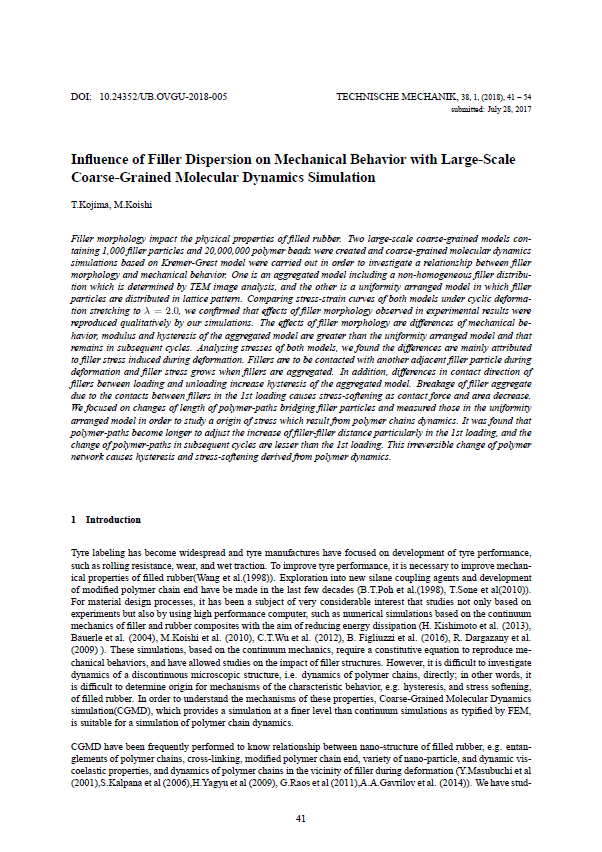Influence of Filler Dispersion on Mechanical Behavior with Large-Scale Coarse-Grained Molecular Dynamics Simulation
DOI:
https://doi.org/10.24352/UB.OVGU-2018-005Abstract
Filler morphology impact the physical properties of filled rubber. Two large-scale coarse-grained models containing 1,000 filler particles and 20,000,000 polymer beads were created and coarse-grained molecular dynamics simulations based on Kremer-Grest model were carried out in order to investigate a relationship between filler morphology and mechanical behavior. One is an aggregated model including a non-homogeneous filler distribution which is determined by TEM image analysis, and the other is a uniformity arranged model in which filler particles are distributed in lattice pattern. Comparing stress-strain curves of both models under cyclic deformation stretching to Lambda = 2.0, we confirmed that effects of filler morphology observed in experimental results were reproduced qualitatively by our simulations. The effects of filler morphology are differences of mechanical behavior, modulus and hysteresis of the aggregated model are greater than the uniformity arranged model and that remains in subsequent cycles. Analyzing stresses of both models, we found the differences are mainly attributed to filler stress induced during deformation. Fillers are to be contacted with another adjacent filler particle during deformation and filler stress grows when fillers are aggregated. In addition, differences in contact direction of fillers between loading and unloading increase hysteresis of the aggregated model. Breakage of filler aggregate due to the contacts between fillers in the 1st loading causes stress-softening as contact force and area decrease. We focused on changes of length of polymer-paths bridging filler particles and measured those in the uniformity arranged model in order to study a origin of stress which result from polymer chains dynamics. It was found that polymer-paths become longer to adjust the increase of filler-filler distance particularly in the 1st loading, and the change of polymer-paths in subsequent cycles are lesser than the 1st loading. This irreversible change of polymer network causes hysteresis and stress-softening derived from polymer dynamics.





